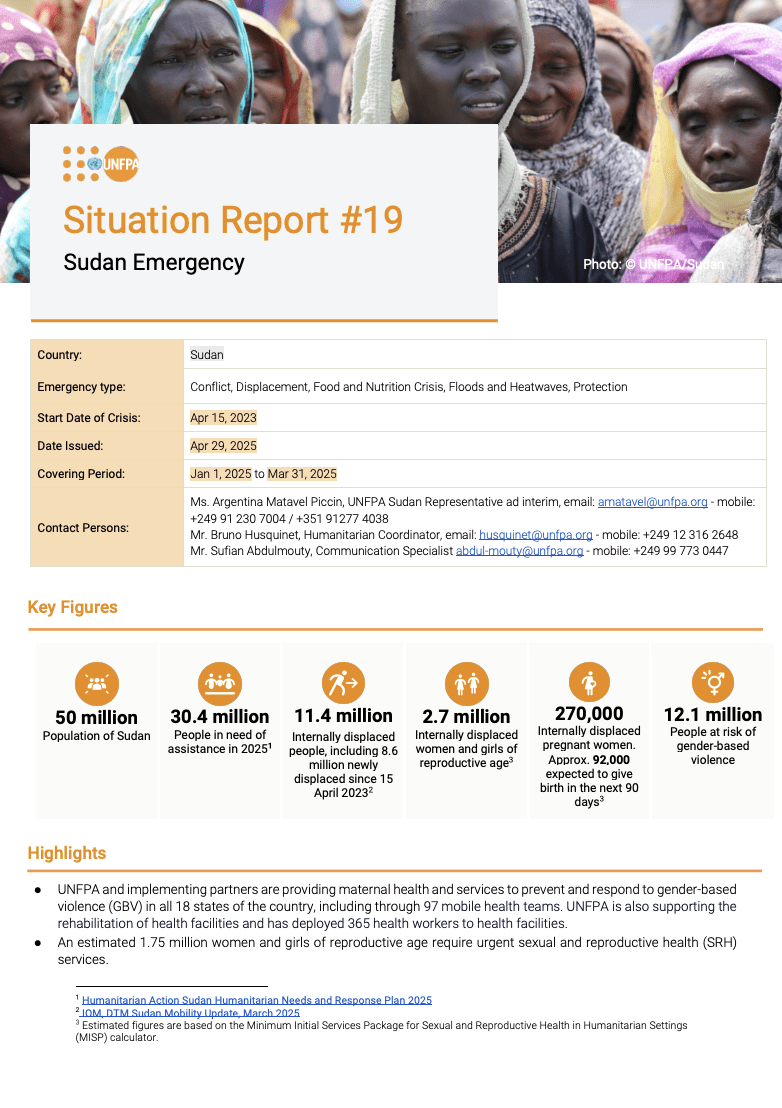
Resources
UNFPA Sudan Situation Report #19 - March 2025
Resource date: Apr 2025
Author: UNFPA Sudan

Resources
Resource date: Apr 2025
Author: UNFPA Sudan
Sudan is now the world’s largest internal displacement crisis, with approximately 11.4 million people displaced across the country, as well as an additional 3 million people having fled to neighbouring countries. Sudan is facing the worst levels of acute food insecurity ever recorded in the country by the IPC – around 755,000 people are facing catastrophic levels of hunger, which will increase the risk of death, poor pregnancy outcomes, weak immune systems, and long-term health problems for both mothers and children.
An estimated 1.75 million women and girls of reproductive age require urgent sexual and reproductive health (SRH) services. Between January and March 2025, UNFPA delivered critical SRH services across all 18 states of Sudan, including supporting emergency obstetric care facilities, deploying mobile clinics, distributing essential medical supplies, deploying 365 health workers to health facilities as well a building the capacity of existing health staff, rehabilitating damaged health infrastructure, and strengthening referral systems. However, SRH services are still severely limited due to shortages of essential supplies and medical equipment, and a lack of trained midwives, obstetricians and emergency obstetric care providers, particularly in rural and remote areas.
Conflict-related sexual violence is rising sharply in Sudan, with an estimated 12.1 million people at risk. From January to 15 March 2025, UNFPA and implementing partners reached 62,150 people through various gender-based violence (GBV) interventions. Activities included awareness-raising, the provision of specialized GBV services, distribution of dignity kits, and vocational training. UNFPA is currently supporting 63 WGSSs that provide essential GBV prevention and response services.
In 2025, UNFPA is appealing for $145.7 million to respond to critical SRH and GBV needs in Sudan. To date, only around 27% of this funding has been provided, leaving a $105.9 million funding gap which threatens the scale and sustainability of life-saving programmes for women and girls.